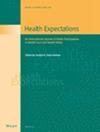Improving Diversity in Recruitment: Lessons Learned During the REACH Pregnancy Circles Pilot Trial
Abstract
Introduction
Our ability to address inequities in health outcomes is hampered by the under-representation of underserved groups in research. Research exploring this topic has focused on observational studies in the American context. This is a pivotal concern for maternity research in the UK as perinatal outcome variables vary by ethnicity, socioeconomic and linguistic background. This paper reports the findings of an analysis of the diversity achieved by different recruitment strategies used within a feasibility study and pilot trial of group antenatal care (Pregnancy Circles).
Method
A pilot randomised controlled trial involved implementation of Pregnancy Circles across three maternity services in an area of high ethnic, socioeconomic and linguistic diversity. Following findings of high ethnic diversity but low levels of educational and linguistic diversity amongst participants recruited in our prior feasibility study, equity-informed strategies were put into place to attempt to increase recruitment diversity in the pilot trial, addressing organisational barriers (additional language support); attitudinal barriers (staff training to counteract recruitment bias) and practical barriers (extending the recruitment period to reach women accessing care late). Women who declined participation were invited to complete a short anonymous questionnaire covering demographic details and reasons for declining. The demographic characteristics of participants in the feasibility and pilot studies, and the pilot study decliners, were compared using descriptive statistics and free-text reasons for declining were analysed thematically.
Results
The targeted recruitment processes were successful in widening the diversity of participants in this study, in particular for women with limited English proficiency and low educational achievement. Nevertheless, comparison of participants to those who declined showed some barriers persisted. The most common reason to decline was lack of time, most commonly due to caring responsibilities, and this was more likely to be cited by ethnically minoritized women.
Conclusion
Recruitment plans focused on widening diversity can be effective but are likely to require additional resources such as funding longer recruitment periods or interpreting services. The gendered nature of maternity research poses particular challenges, and our study suggests that addressing barriers such as those around childcare would enhance the recruitment of socio-economically deprived and minoritized women.
Patient or Public Contribution
Our study team included two service user representatives as co-investigators, feeding into all aspects of the study. The focus of the work reported here was to increase the participation of underserved communities in the pilot trial and to inform the Pregnancy Circles RCT, to enable them to contribute their data and lived experience to the findings and evaluation of this intervention.
Trial Registration
Due to an administrative oversight, trial registration for this pilot trial was applied for during the 6-week recruitment period, rather than before recruitment commencing (ISRCTN66925258. Retrospectively registered 3 April 2017). Registration occurred before programme intervention, outcomes and process data collection and all data analysis


 求助内容:
求助内容: 应助结果提醒方式:
应助结果提醒方式:


